Dogs bring happiness, love, and companionship to our lives. However, raising a well-behaved and obedient canine companion requires time, patience, and effective training methods. There are many tools available to dog owners, and one of these is the dog training stick.
Using a training stick in teaching dogs has been the subject of debate. But as with every other training tool, it has its advantages and disadvantages.
Remember, responsible and effective dog training relies on positive reinforcement, patience, and clear communication. Whether you’re a seasoned dog owner or embarking on the journey of training your first furry companion, understanding the benefits and potential drawbacks of a dog training stick is crucial in shaping your training approach.
In this blog post, we explore the topic of dog training sticks and how they help your training regimen.
AT A GLANCE (SEE ON AMAZON):
- Best Lure Stick: Brandon McMillan Lure Stick
- Best Agitation Stick: Dean and Tyler Agitation Stick
- Best Target Stick: Company of Animals Target Stick
- Best Heeling Stick: Deluxe Heel Stick by SportDOG Brand Store
Dog Training Stick
A dog training stick is a long, thin tool that can be used to direct and control your dog’s behavior.
For some time now, the use of sticks in dog training has been a controversial topic. Some experts advocate for their use, while others warn against it. However, it usually just boils down to how a dog owner or trainer uses the stick.
The ultimate decision of whether or not to use a dog training stick is a personal one that should be made with careful consideration of your dog’s individual needs and temperament.
Understanding the proper use and benefits of these sticks can help you make an informed decision that will help you train your dog in the most effective and humane way possible.
In this blog post, we will explore the types of dog training sticks and how they are used.
Types of Training Sticks
Depending on the dog training a trainer or pet owner may practice, there are various types of training sticks that one can utilize.
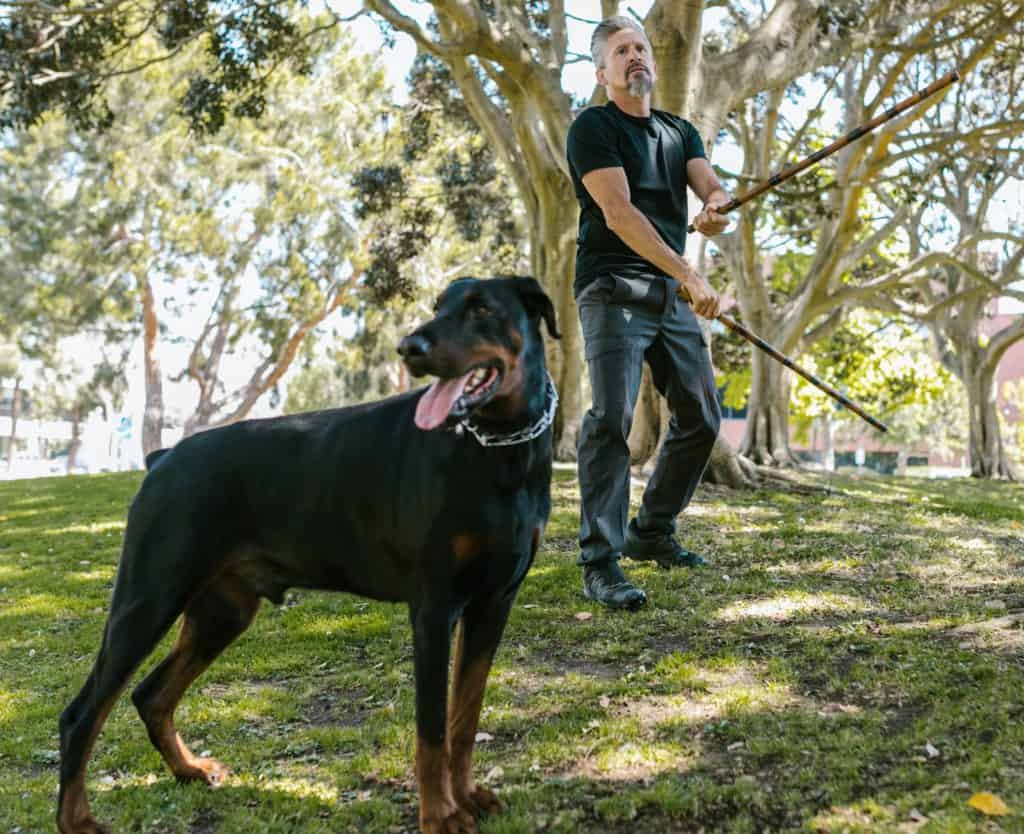
Lure Stick
Training a dog can be quite a hard task physically, which might cause body aches and back pain due to the frequency of bending over and picking things up. A lure stick is explicitly made for the purpose of preventing these instances when one has to bend over.
Made popular by dog trainer and author of the book Lucky Dog Lessons: Train Your Dog in 7 Days, Brandon McMillan, a lure stick is a treat reward tool that most dog trainers use to get your dog to act in your desired manner without the pet trainer having to bend over.
Generally, these sticks are extendible with a clip at the end where you can clip training treats and are used in lure stick dog training. Moving the treat to the floor would encourage your dog to move down and obey your command.
Lure sticks are highly beneficial in leash training, too! When your dog pulls on a leash during a walk, you can easily bring the treat near him to distract him from pulling.
The Brandon McMillan Lure Stick
This lure stick by Brandon McMillan works to lure your pets away from other dogs and other distractions and prevent them from leash pulling. With the clipped treat reward at the end of this lure stick, your dogs will stay where you want them to be. The belt clip lets you keep the tool at hand even when not used.
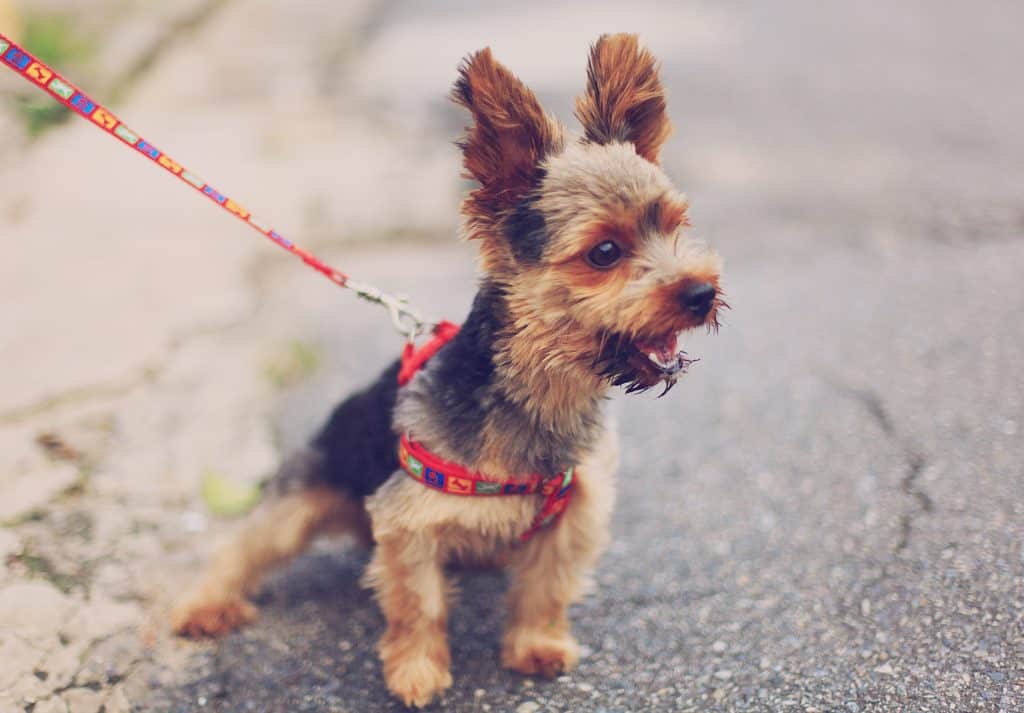
Agitation Sticks
Agitation sticks are usually used in bite work sessions to get your dog to attack. As its name suggests, it agitates the dog, provoking him to lunge and bite.
Dean and Tyler Professional Leather Agitation Stick
This Dean and Tyler Professional Leather Agitation Stick is made of soft leather, making it comfortable and soft so as not to hurt your canine best friend during sessions.
Target Stick
What is a target stick in dog training?
Extendible with a target at the end (like a red ball), a target stick is a long, lightweight rod, usually made of aluminum, and used to direct your canine best friend where to look or where to go.
Beneficial for teaching your dog basic behaviors and controlling ‘target’ actions, target stick dog training is definitely brilliant for both directing him and utilizing as a part of other more complicated tricks.
Basically, target training involves teaching your dog to touch or follow the target. Doing so makes it easier for you to encourage him where to go. And this could be accomplished with the use of target sticks.
Company of Animals Coachi Target Stick
If you are looking to purchase one, check out this Company of Animals Coachi Target Stick. This item has worked well in target training based on customer reviews.
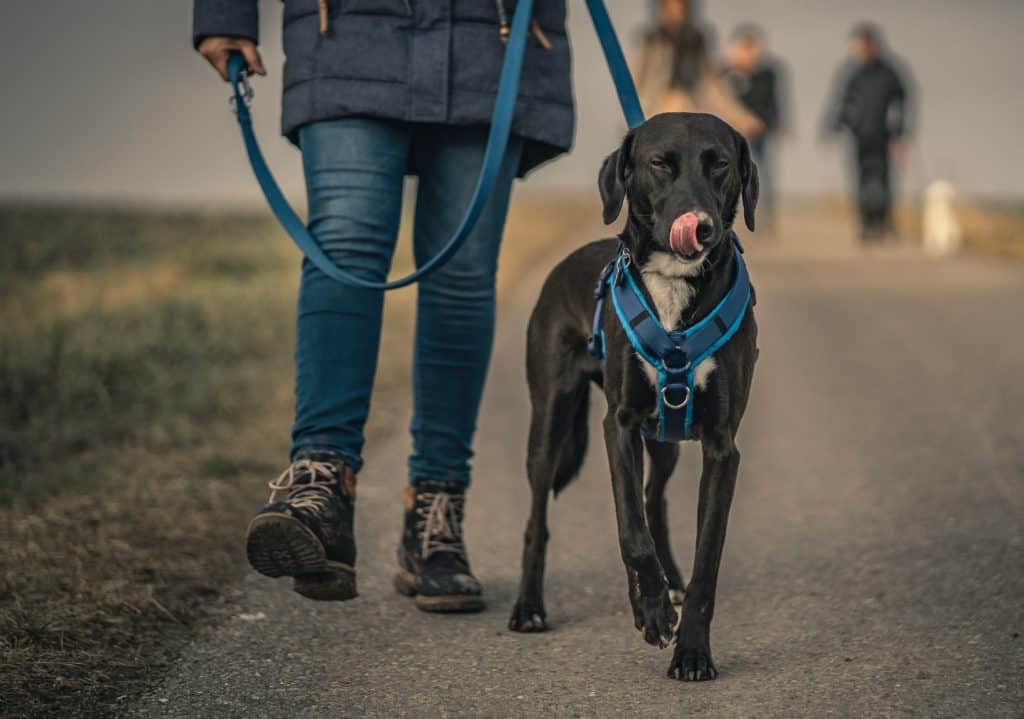
Heel or Heeling Stick
What is a heeling stick for dogs?
A heeling stick is a crop-style stick used to command your dog to heel. It also signals your dog to stay in the proper heeling position.
The two sticks limit the places for your dog to move. Hence, he walks in a heel with you. Maintaining this training tool in the correct position would ensure that your dog is aligned with you.
Deluxe Heel Stick by SportDOG Brand Store
Check out this Deluxe Heel Stick by SportDOG Brand Store with extra-long and anti-slip rubber handles.
Look at the video below on how and why trainers use heeling sticks.
How Do You Train a Dog With a Stick?
Choose a training stick, then put it on the floor in front of your dog. It should be held out about 1 cm away and slightly to the side of your pup’s nose.
His curiosity might trigger him to investigate it using his snout immediately. If he does, click your clicker (if you are into clicker training) or just mark the action with a ‘Yes!’ or ‘Good!’ and reward him with a treat.
Set Your Goal
Your goal is to encourage and allow your dog to nudge this training tool on his own, not for you to just use it on him.
If he seems uninterested, try hiding it behind you for a few seconds, then present it again. So that he can focus and sniff it, you may place a small treat or rub some food like peanut butter at the stick’s tip. The instant he takes the treat, touches it, or bumps it, reward accordingly. Do not let him lick, mouth, or chew the stick.
Repeat
Repeat this a number of times by distancing the tip of the training stick an inch or two from your dog’s nose each time.
Continue until he understands that touching it earns him a treat. Try to avoid verbal commands first and be patient with this exercise. Either your dog will learn this quickly or need more time over several sessions.
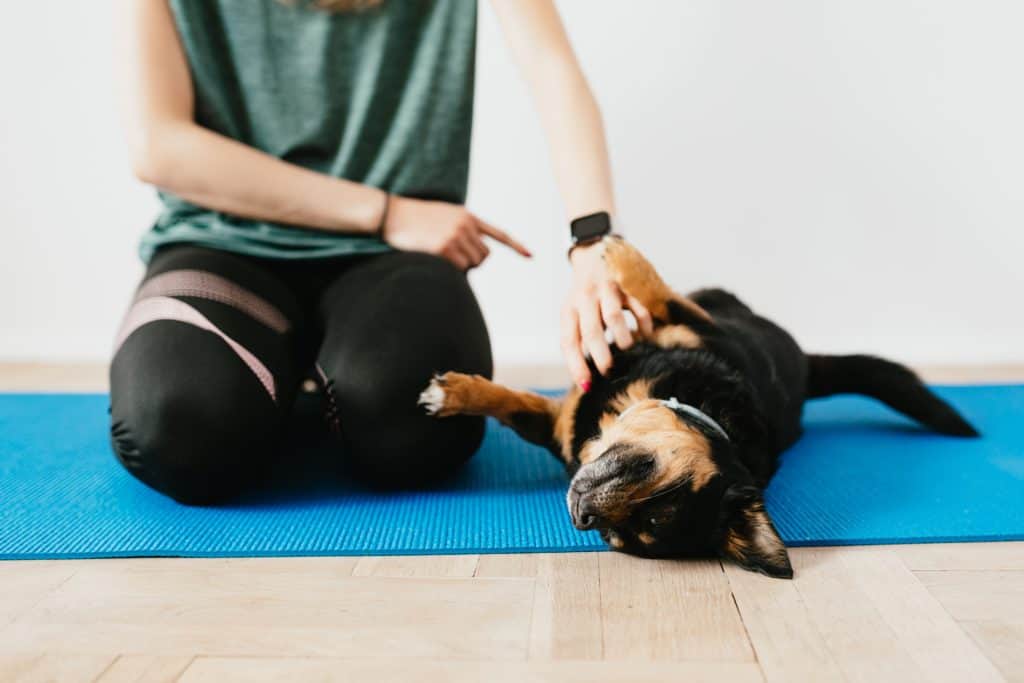
Advance On
After your dog has grasped the basic foundation, it’s time for more advanced obedience training.
Move the dog training stick away from him, to the left or right, and directly in front of him. Click the clicker and reward when he takes a step forward to follow and touch it. Keep the distances short while slowly holding the stick. Progress by raising the stick above your dog’s head so that he reaches upwards to nudge it.
Command
Introduce the command.
When your dog gets the hang of it and keeps on nudging the training stick every single time, add a verbal cue like “Touch,” “Stick,” or whichever related word you prefer.
Say it just before you present the stick, and reward them as always every time he performs well. Repeat many times until he finally learns to touch the stick by your command alone.
Develop
Develop the exercise.
When he is eagerly nudging and following the training stick, perhaps grabbing at it when you are not even asking for that, raise your criteria.
See if you can get him to stand on his hind legs to reach the stick’s tip or bow down to reach the floor. Settle for small movements at first to make it easy for him.
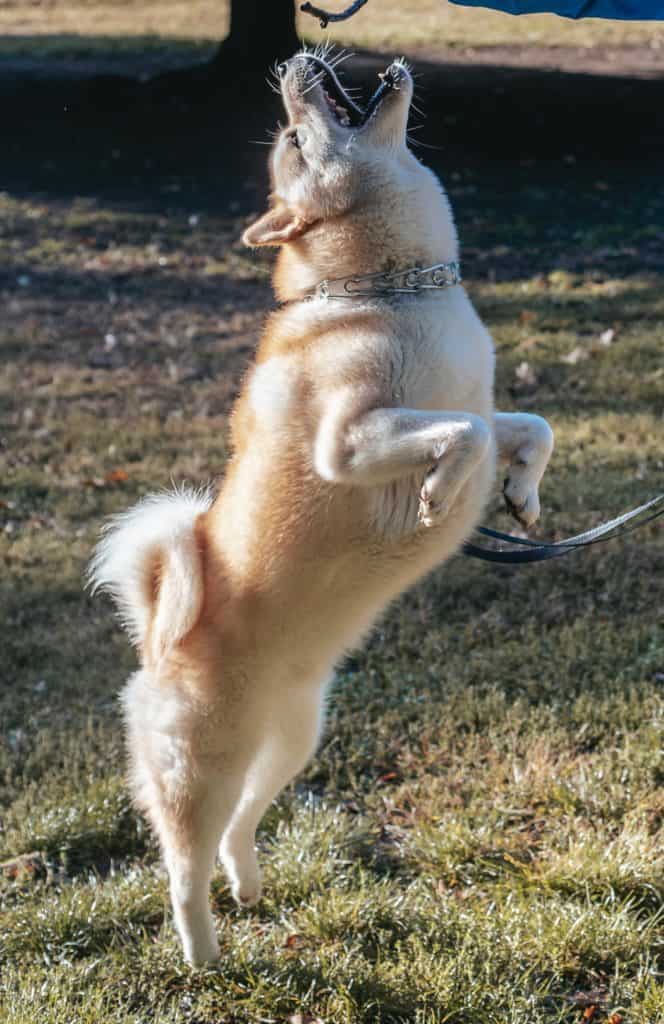
Look at the Signs
Watch for signs of understanding, like a wagging tail.
Omit the click if your dog mouths or bites the training stick or touches it along the side. He will not mind the lacking clicks, but he will most likely find ways to make you click again.
To reduce frustration, throw a treat on the ground a short distance away from you to give him a break before re-presenting the target.
Be Consistent
Repeat several times.
Gradually progress each time and move the stick around. Try walking with your dog and the stick, as sometimes dogs catch on faster if they get clicked while moving.
Gradually train your dogs to longer distances after some time. Soon, you will be able to walk with the stick smoothly, and he will touch it on command. Practice this over several sessions until he has ease doing it.

Top Tips When Using This Training Tool
Stick training corrects obedience issues and will reinforce his good behaviors and skills quickly and positively.
Some dogs will be cautious of this training tool. If your dog is afraid of it, gently get him acquainted by using positive reinforcement with encouraging words, placing the stick on the ground, putting a treat underneath the tip, and letting him sniff it out.
Take note that it is not used to punish your dog nor inflict harm on him, or treat aggressive behaviors. Instead, it is beneficial to speed up the dog’s response to a command to teach him specific movement skills and proper positions such as sitting and heeling.
Teach your dog initially in a place where there are few distractions. Once he has adjusted to the hang of it, slowly transition him from the indoors to the yard, in the car, or at the park.
As usual, keep stick training sessions short, around three to five minutes, but repeat several times during the day. Take things at your dog’s pace. Do not rush your dogs into learning.
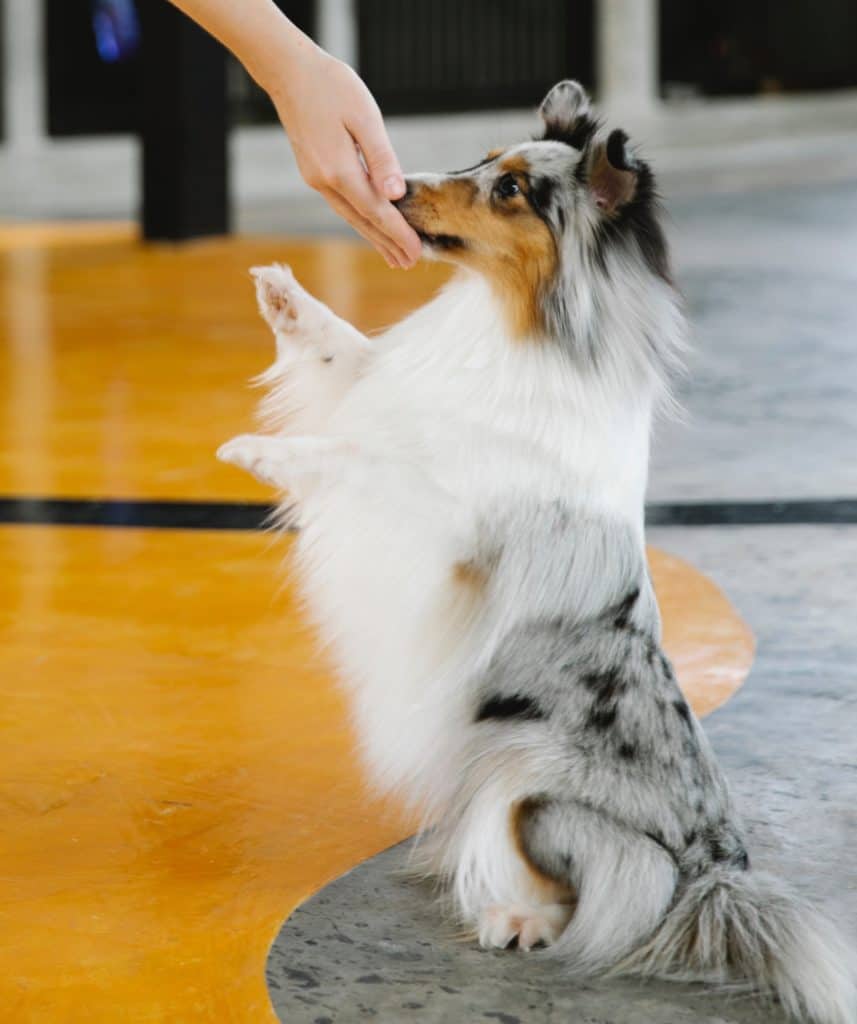
Next Level Targets
Now that your dog is acquainted with this training aid, you do not have to stop using it. Elevate things a step further by utilizing them to teach other behaviors.
If you are interested in agility training, you can teach him to navigate obstacles and indicate contact points. Practice him on some go-outs, drop on recall, shutting doors, ringing a doggy doorbell, improving heelwork, or trying tricks like spin and bow.
Having learned the targeting behavior and added a cue word, you can transfer the action to other items or “targets.” Use it to lure your dog to specific objects and introduce names for those. Just show it to your dog, ask him to ‘Touch’ it, and reward him when he does.
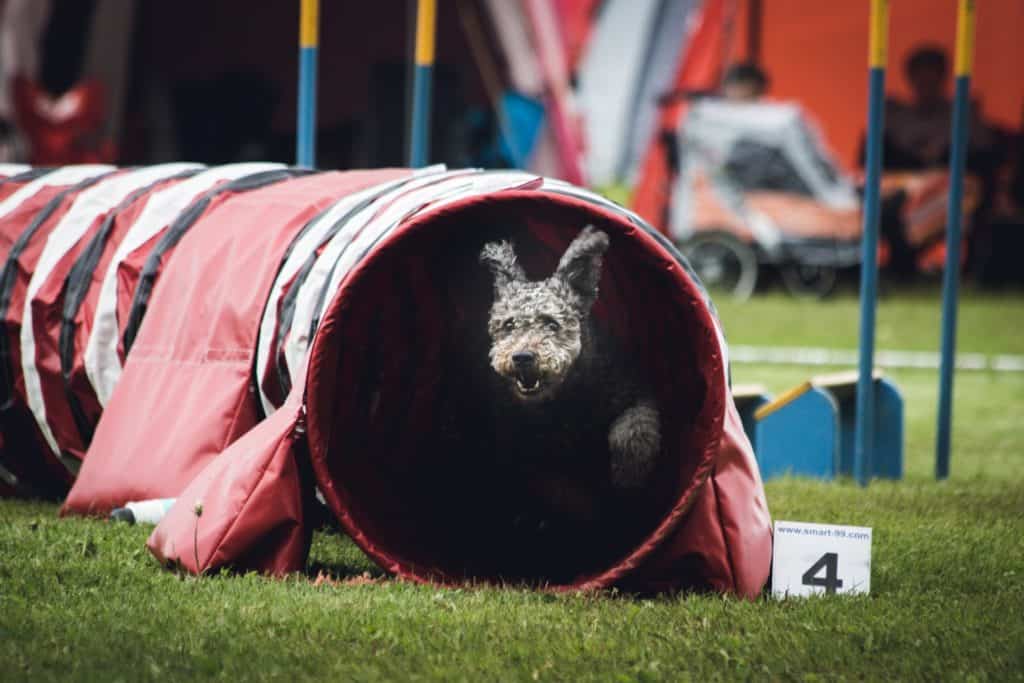
Final Thoughts
Should I carry a stick when walking my dog?
The possibilities are infinite, with many lessons you can impart to your dog using this training tool. Your imagination is the only limit. So, when you think it would help you and your dog to bring this tool on your walks, then do so.
This ability to open up to so many options when training a dog to observe proper behaviors, acquire complex skills, and perform cool tricks is precisely why dog trainers love targeting a canine with a stick.
Remember, a dog that disregards basic obedience training will most assuredly become sloppy during simple exercises or active drills by ignoring your commands and hand signals.
Have fun using a dog training stick, and enjoy this new way of communicating with your dog.

